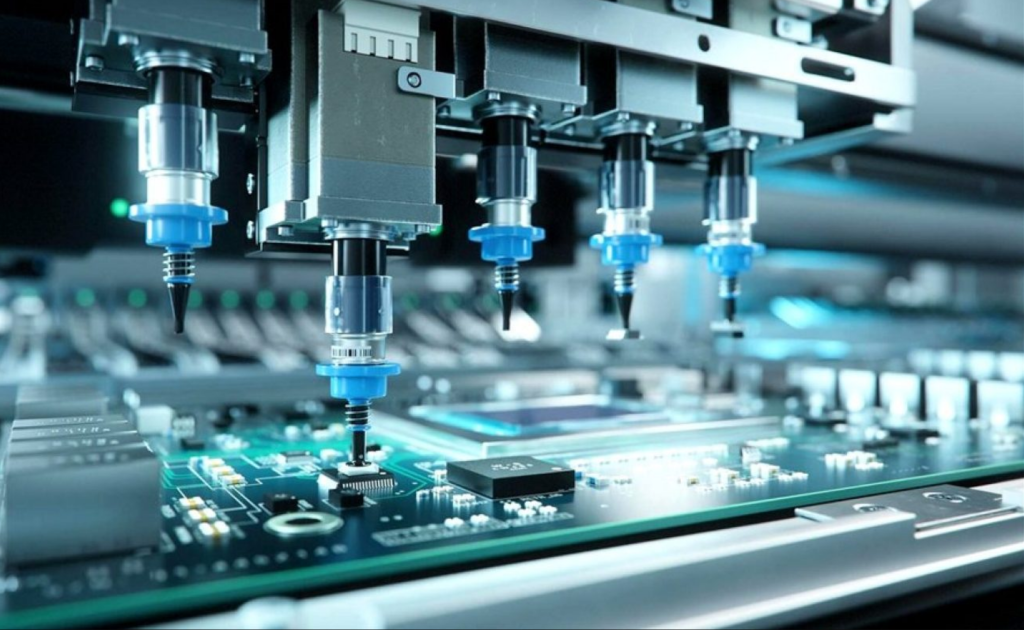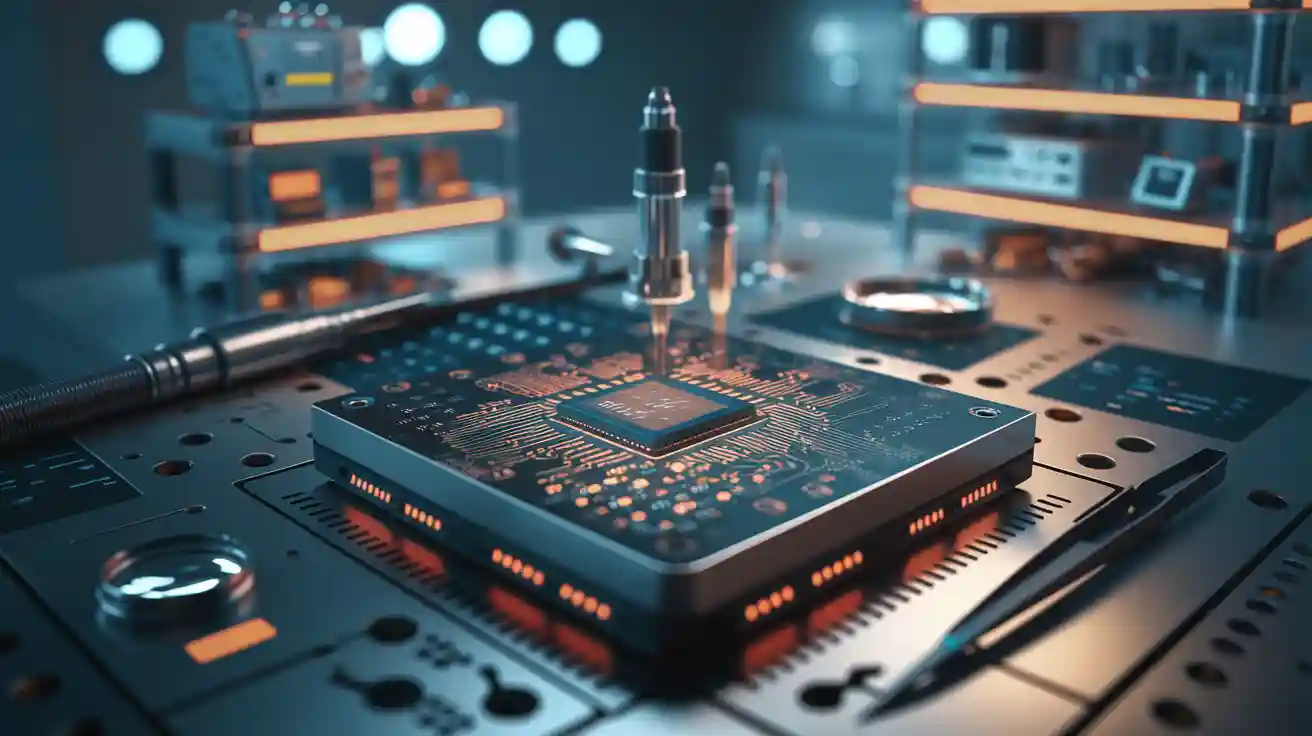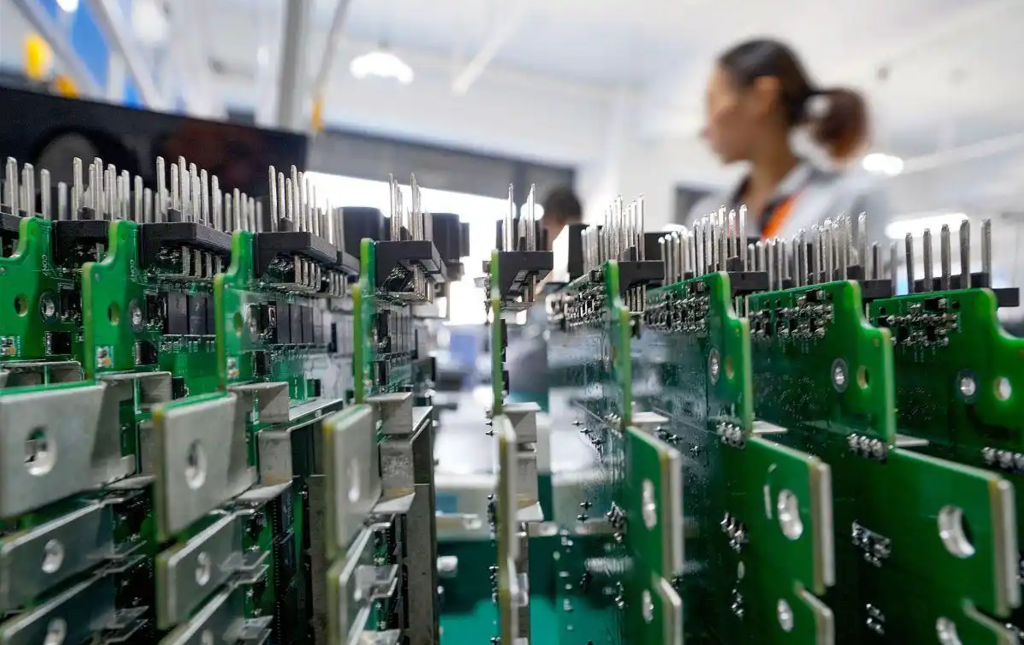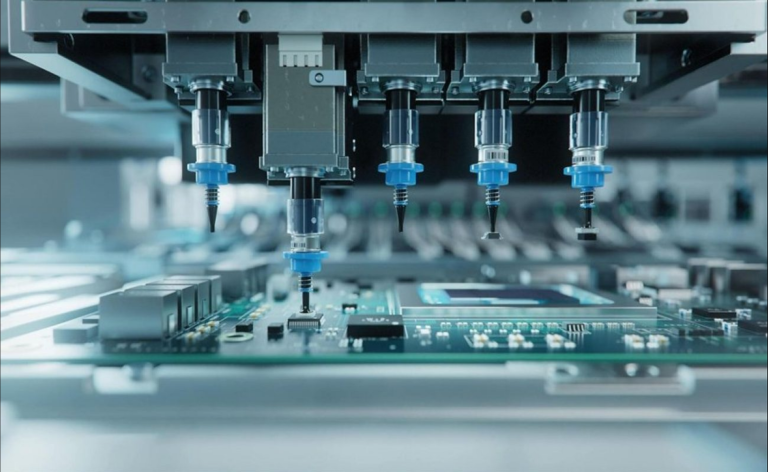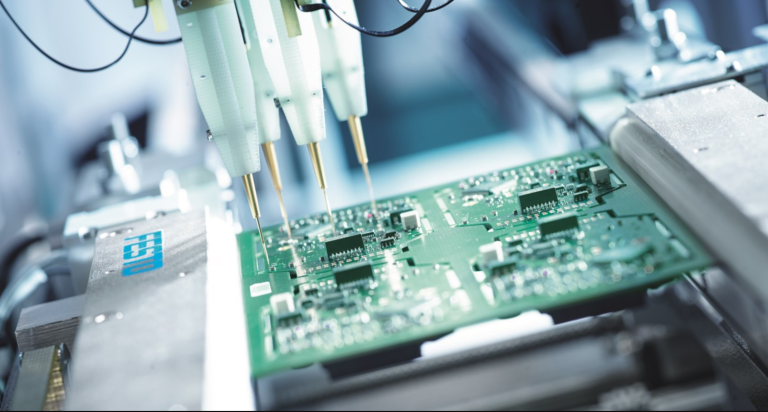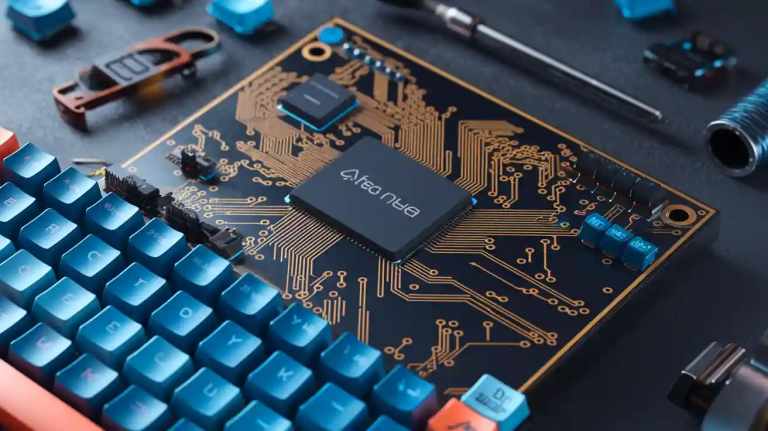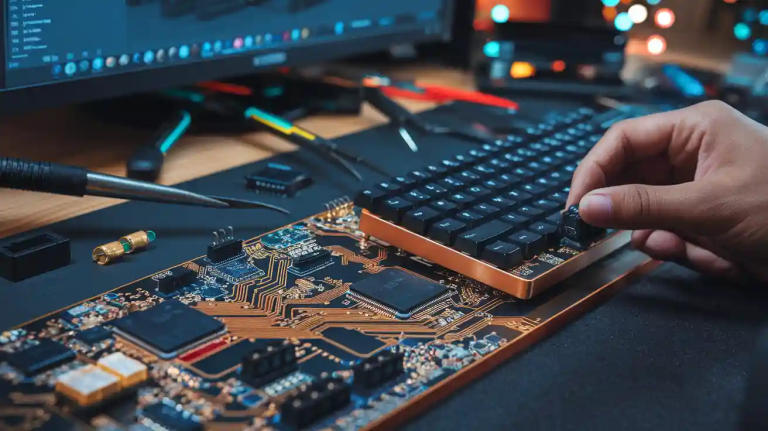Medical instrument control boards play a vital role in ensuring the reliability and safety of medical equipment. These boards undergo rigorous quality control, material selection, and testing to meet strict industry standards. Choosing an unreliable manufacturer can lead to device malfunctions, inaccurate readings, or even life-threatening situations. Faulty medical devices, such as defective ventilators or infusion pumps, compromise patient safety and disrupt healthcare operations. To avoid these risks, you must select a manufacturer with proven expertise in medical PCB design and strict adherence to regulatory standards. This ensures high-quality medical devices that healthcare providers and patients can trust.
Key Takeaways
- Focus on quality and certifications when picking a manufacturer. Check for ISO 13485 and IPC Class III certifications for high standards.
- Make sure the manufacturer follows rules like FDA regulations. These rules are important for safe and effective medical devices.
- Check the manufacturer’s reputation by reading reviews and case studies. A good history shows they are reliable and skilled in making medical PCBs.
- Pick a manufacturer with advanced tools like HDI for small designs. This helps your medical devices work well and fit modern needs.
- Build a long-term relationship with your manufacturer. Working together ensures steady quality, better efficiency, and new solutions.
Key Factors for Choosing a Medical Instrument Control Board Manufacturer
Importance of quality assurance and certifications
When selecting a medical PCB manufacturer, quality assurance should be your top priority. A robust quality management system ensures that medical PCBs meet the highest standards for reliability and safety. Certifications like ISO 13485 and IPC Class III demonstrate a manufacturer’s commitment to producing high-quality medical devices. These certifications also validate that the manufacturer adheres to stringent industry regulations, reducing the risk of device malfunctions.
Quality assurance processes often include rigorous testing protocols such as HALT (Highly Accelerated Life Testing) and HASS (Highly Accelerated Stress Screening). These tests enhance the durability and reliability of medical equipment, ensuring they perform consistently in critical healthcare environments. Additionally, maintaining detailed documentation throughout the manufacturing process supports traceability and compliance, which are essential for regulatory submissions and audits.
Tip: Always verify a manufacturer’s certifications and inquire about their quality assurance processes to ensure your medical devices meet industry standards.
Adherence to regulatory standards for medical device PCB manufacturing
Regulatory compliance is non-negotiable in the medical industry. A reliable medical PCB manufacturer must have a deep understanding of FDA regulations and global standards like IEC 60601 and ISO 14971. These regulations ensure that medical equipment is safe, effective, and suitable for use in healthcare settings.
Manufacturers must also comply with requirements such as establishment registration, medical device listing, and premarket notification (510(k)). These steps are critical for gaining FDA approval and ensuring the safety and efficacy of medical devices. Engaging with manufacturers who prioritize regulatory compliance can help you avoid costly delays and legal issues.
The medical device industry is valued at over $175 billion, underscoring the importance of strict regulatory compliance to maintain patient safety and product reliability.
Industry-specific expertise in medical equipment production
Partnering with a manufacturer experienced in medical PCB design is crucial for ensuring the success of your project. Manufacturers with industry-specific expertise understand the unique challenges of producing medical-grade products, such as compact designs, material selection, and compliance with healthcare regulations.
| Evidence Type | Description |
|---|---|
| Manufacturer Expertise | Insights to mitigate project delays and ensure timely delivery. |
| Regulatory Knowledge | Familiarity with FDA, IEC, and UL standards for seamless compliance. |
| Quality Control Processes | Established systems to support product approval and reduce risks. |
Specialized knowledge in manufacturing processes and regulatory compliance helps manufacturers deliver reliable and safe medical equipment. This expertise minimizes risks, enhances product performance, and ensures that your devices meet the expectations of healthcare providers and patients.
Evaluating the manufacturer’s reputation and track record
When choosing a medical instrument control board manufacturer, their reputation and track record provide valuable insights into their reliability and expertise. A strong reputation often reflects consistent quality, adherence to deadlines, and a commitment to customer satisfaction.
Key Steps to Evaluate Reputation:
- Research Customer Reviews and Testimonials
Look for feedback from other clients in the medical industry. Positive reviews highlight the manufacturer’s ability to deliver high-quality products and meet expectations. Negative reviews can reveal recurring issues, such as delays or subpar quality. - Examine Case Studies and Past Projects
Review the manufacturer’s portfolio to understand their experience with medical PCB design. Successful projects in similar applications demonstrate their capability to handle complex requirements. - Check Industry Recognition
Awards, certifications, and partnerships with reputable organizations indicate a manufacturer’s credibility. These achievements show their dedication to excellence and innovation.
Tip: Reach out to industry peers or colleagues for recommendations. Word-of-mouth referrals often provide honest insights into a manufacturer’s reliability.
Questions to Ask During Evaluation:
| Question | Why It Matters |
|---|---|
| How long have you been in business? | Longevity often indicates stability and expertise. |
| Have you worked on similar projects? | Experience with similar devices ensures familiarity with specific challenges. |
| Can you provide references? | References allow you to verify claims and assess customer satisfaction. |
A manufacturer’s track record reflects their ability to deliver consistent results. Prioritize those with a history of producing safe, reliable, and innovative medical PCBs. This approach minimizes risks and ensures your devices meet the highest standards.
Note: A manufacturer’s reputation isn’t just about past success. It’s also about their ability to adapt to new technologies and maintain quality in evolving healthcare environments.
Assessing Manufacturer Capabilities in Medical PCB Design
Use of advanced technologies like HDI for compact designs
Advanced medical PCB technologies, such as high-density interconnect (HDI), have revolutionized the design of medical-grade PCBs. These technologies enable the creation of smaller, denser boards that are essential for compact medical devices. HDI PCBs allow manufacturers to achieve line widths of 5 mils or less, meeting IPC Class III standards for reliability and performance. This level of precision is critical for medical device PCBs, where even minor errors can compromise safety.
HDI technology also supports the miniaturization of medical devices, such as implants and diagnostic tools. For example, compact camera systems used in procedures like colonoscopies rely on HDI PCBs for high-quality imaging. These advancements improve patient comfort and diagnostic accuracy while maintaining the reliability of the device. By partnering with a manufacturer skilled in HDI technology, you can ensure your medical devices meet the highest standards of quality and functionality.
Expertise in material selection for safety and reliability
Material selection plays a pivotal role in the safety and reliability of medical device PCBs. Specialized materials are often required to meet the unique demands of medical applications, including sterilization and regulatory compliance. For instance, materials must be free from contaminants and impurities that could affect the device’s performance or safety. Flame retardancy and durability are also critical factors in ensuring the long-term reliability of medical-grade PCBs.
An experienced manufacturer understands how to select materials that align with your device’s intended use and regulatory requirements. This expertise not only enhances the quality of the PCB assembly but also streamlines the certification process. By choosing a manufacturer with proven material selection capabilities, you can reduce risks and ensure your devices perform reliably in critical healthcare environments.
Custom design and prototyping services for medical devices
Custom design and prototyping services are essential for developing innovative medical devices. A reliable manufacturer offers tailored solutions to meet your specific requirements, from initial concept to final production. Prototyping allows you to test and refine your designs, ensuring they meet the stringent standards of medical-grade PCBs.
Manufacturers with advanced capabilities in PCB assembly can create prototypes that replicate the final product’s performance. This process helps identify potential issues early, saving time and resources during production. Additionally, custom design services enable you to incorporate advanced medical PCB technologies, such as IoT connectivity, into your devices. By collaborating with a manufacturer that prioritizes customization and prototyping, you can bring cutting-edge medical devices to market with confidence.
Scalability to meet production demands
Scalability is a critical factor when selecting a medical instrument control board manufacturer. As your production needs grow, the manufacturer must have the capacity to scale operations without compromising quality or delivery timelines. A scalable production process ensures your medical devices remain reliable and compliant, even as demand increases.
Manufacturers with robust scalability capabilities often implement process validation protocols such as IQ (Installation Qualification), OQ (Operational Qualification), and PQ (Performance Qualification). These protocols verify that production processes meet stringent quality standards at every stage. Additionally, batch production tests help identify bottlenecks and optimize workflows, ensuring efficient scaling. Monitoring yield rates further minimizes waste and enhances overall efficiency, which is essential for maintaining cost-effectiveness during high-volume production.
Tip: Ask potential manufacturers about their ability to handle both small prototype runs and large-scale production. Consistency in processes and materials from prototyping to full-scale manufacturing is vital for avoiding delays and ensuring product reliability.
| Evidence Type | Description |
|---|---|
| Method Validation | Ensures accuracy and safety in manufacturing processes, including environmental controls and testing. |
| Facility Approval | Regulatory compliance through equipment maintenance, quality control plans, and periodic inspections. |
| High Production Costs | Significant investment in equipment and materials, necessitating robust quality control measures. |
Scalable manufacturers also excel in rapid prototyping that transitions seamlessly into volume production. This capability allows you to test designs and refine them without disrupting the production timeline. By avoiding unnecessary changes during scaling, you can prevent delays in product launches and maintain a competitive edge in the market.
Partnering with a manufacturer that prioritizes scalability ensures your medical devices meet growing market demands while maintaining the highest standards of quality and safety. This approach not only supports your business growth but also reinforces trust among healthcare providers and patients.
Communication and Support in Medical Equipment Manufacturing
Transparent and collaborative communication processes
Transparent communication fosters trust and ensures that your medical device projects meet expectations. A collaborative approach between you and the PCB assembly manufacturer allows for seamless integration of your requirements into the production process. Open communication ensures that specific needs, such as regulatory compliance and design specifications, are addressed effectively. This collaboration leads to optimal performance in medical devices, enhancing their reliability and safety.
- Effective communication helps navigate the complex regulatory landscape, ensuring compliance with standards like ISO 13485.
- Prioritizing detailed registration and documentation improves product quality and accelerates market access.
By maintaining transparency, you can avoid misunderstandings and ensure that your medical devices meet the highest standards of quality and functionality.
Responsiveness to client feedback and requirements
A manufacturer’s responsiveness to your feedback directly impacts the success of your medical device projects. Prompt communication demonstrates that your concerns are valued and helps resolve issues quickly. This responsiveness not only improves the quality of the PCB assembly but also strengthens your relationship with the manufacturer.
| Benefit | Description |
|---|---|
| Increased Customer Satisfaction | Prompt responses show customers they are valued, enhancing their overall experience and encouraging loyalty. |
| Reduced Customer Complaints | Proactive issue resolution results in fewer complaints, as customers feel heard and satisfied with the service or product. |
| Improved Brand Image | Quick responses enhance the perception of reliability and efficiency, positively impacting the brand’s reputation over time. |
By choosing a manufacturer that prioritizes responsiveness, you can ensure that your medical devices meet your expectations and maintain their reliability.
Availability of post-sales support and maintenance services
Post-sales support is essential for maintaining the performance and reliability of your medical devices. A reliable PCB assembly manufacturer provides ongoing maintenance services to address any issues that arise after production. This support ensures that your devices continue to meet the required quality standards throughout their lifecycle.
For example, Toshiba America Medical Systems implemented a customer satisfaction program to improve loyalty and address concerns. In one case, a Washington hospital reported dissatisfaction with an X-ray system. Targeted support and training resolved the issue, improving the hospital’s experience and trust in the product.
By partnering with a manufacturer that offers robust post-sales support, you can enhance customer satisfaction and ensure the long-term success of your medical devices.
Building long-term partnerships for consistent quality
Establishing a long-term partnership with your medical instrument control board manufacturer can significantly enhance the quality and reliability of your devices. A strong relationship fosters mutual understanding, streamlines communication, and ensures that your specific requirements are consistently met.
Benefits of Long-Term Partnerships
- Consistency in Quality: Manufacturers familiar with your products and standards can maintain consistent quality across all production runs. This reduces the risk of variability and ensures that your devices meet regulatory requirements every time.
- Improved Efficiency: Long-term collaboration allows manufacturers to refine their processes based on your feedback. This leads to faster production cycles and fewer delays.
- Cost Savings: Over time, manufacturers can optimize material sourcing and production methods tailored to your needs, reducing costs without compromising quality.
- Access to Innovation: Trusted partners often share insights into emerging technologies and materials, helping you stay ahead in the competitive medical device market.
Tip: Choose a manufacturer that values collaboration and demonstrates a commitment to your success. This ensures a partnership built on trust and shared goals.
How to Build a Strong Partnership
- Set Clear Expectations: Define your quality standards, timelines, and communication preferences from the start.
- Maintain Open Communication: Regular updates and feedback sessions help address issues promptly and improve outcomes.
- Evaluate Performance Regularly: Periodic reviews ensure that the manufacturer continues to meet your expectations and adapts to any changes in your requirements.
- Invest in Relationship Building: Treat your manufacturer as a partner rather than just a supplier. A collaborative approach fosters loyalty and mutual growth.
Building a long-term partnership with your manufacturer is an investment in the future of your medical devices. It ensures consistent quality, supports innovation, and strengthens your position in the healthcare industry.
Ensuring Safety and Innovation in Medical Device PCB Manufacturing
Designing for reliability and accuracy in medical equipment
Reliability and accuracy are non-negotiable in medical equipment. A well-designed PCB assembly ensures that medical devices perform consistently under various conditions. Manufacturers with expertise in medical technology understand the importance of precision and compliance with strict regulations. They use advanced techniques like method validation and design for manufacturability (DfM) to meet these high standards.
For example, method validation ensures that every step of the manufacturing process meets accuracy and safety requirements. Facility approvals further guarantee that equipment and processes comply with regulatory standards. These measures reduce the risks of device malfunctions and enhance performance and safety. Additionally, selecting high-quality materials and maintaining signal integrity are critical for ensuring the reliability of medical devices.
| Key Factor | Description |
|---|---|
| High Reliability | Ensures devices withstand operating environments and minimize failure risks. |
| Signal Integrity | Prevents noise interference, maintaining accurate diagnostics and device functionality. |
| Quality Control | Continuous monitoring ensures compliance with medical standards and specifications. |
By focusing on these factors, you can ensure your medical equipment delivers accurate results and builds trust among healthcare providers and patients.
Supporting advancements in healthcare technology
Advancements in healthcare technology rely heavily on innovative PCB designs. Modern medical devices demand compact, energy-efficient, and multifunctional solutions. High-density interconnect (HDI) technology plays a pivotal role in meeting these demands. It enables the creation of smaller, denser boards that support miniaturized medical devices like wearable monitors and implantable sensors.
The integration of IoT in medical PCBs has further revolutionized healthcare. IoT-enabled devices allow real-time communication and data sharing, improving diagnostics and treatment outcomes. For instance, IoT-powered insulin pumps can monitor glucose levels and adjust dosages automatically, enhancing patient care. These innovations not only improve device functionality but also pave the way for more precise and personalized healthcare solutions.
Minimizing risks of device malfunctions and failures
Minimizing risks in medical devices starts with robust PCB assembly processes. Manufacturers must prioritize quality control and traceability to ensure compliance with medical standards. Comprehensive documentation tracks every component from supplier to final product, reducing the likelihood of errors.
Electromagnetic interference (EMI) and electromagnetic compatibility (EMC) compliance are also critical. These measures prevent devices from malfunctioning due to external interference. Additionally, power consumption considerations ensure that portable medical devices maintain performance and safety without compromising efficiency.
Tip: Partner with manufacturers who emphasize high reliability and rigorous testing. This approach minimizes risks and ensures your devices meet the highest standards of safety and functionality.
By addressing these risks proactively, you can deliver medical devices that healthcare providers trust and patients rely on for accurate diagnostics and treatment.
Enhancing patient trust through high-quality medical devices
Patient trust is a cornerstone of effective healthcare. High-quality medical devices play a pivotal role in fostering this trust by ensuring safety, reliability, and consistent performance. When healthcare providers use devices that meet stringent standards, patients feel reassured about the care they receive.
Medical devices with robust safety features and proven functionality inspire confidence among healthcare professionals. Effective clinical education further strengthens this trust. Training programs that provide comprehensive insights into device operation and safety features help healthcare providers address any skepticism about new technologies. This increased proficiency leads to greater confidence in the device’s capabilities, encouraging higher adoption and utilization.
Tip: Partner with manufacturers who prioritize training and education for healthcare providers. This ensures that your devices are used effectively and trusted by both professionals and patients.
A strong unique selling proposition (USP) also enhances patient satisfaction. Devices that stand out for their reliability, ease of use, or innovative features not only appeal to doctors but also influence caregivers and patients. For example, a portable diagnostic tool with user-friendly features can improve the patient experience by reducing discomfort and providing faster results.
- Key factors that build patient trust in medical devices:
- Reliable performance under various conditions.
- Clear communication of safety and functionality.
- Positive feedback from healthcare providers and caregivers.
By focusing on quality and usability, you can create medical devices that patients trust. This trust translates into higher satisfaction, better compliance with treatment plans, and improved health outcomes. When patients believe in the devices used for their care, they are more likely to engage actively in their healthcare journey.
Choosing a reliable manufacturer for medical instrument control boards is essential for ensuring safety and fostering innovation in medical equipment. Manufacturers with expertise in medical design, regulatory compliance, and quality assurance deliver devices that meet the highest standards. For example, rigorous testing protocols like HALT and HASS enhance reliability, while advanced PCB technologies improve diagnostic accuracy. To make informed decisions, research manufacturers thoroughly, verify certifications, and assess their capabilities. Prioritize patient safety and technological advancements to create medical devices that healthcare providers and patients can trust.
| Benefit | Description |
|---|---|
| Regulatory Compliance | Medical-grade PCBs must meet IPC Class II and IPC Class III specifications, ensuring safety and reliability. |
| Quality Assurance | Rigorous testing protocols, including HALT/HASS testing, guarantee the robustness of medical devices. |
| Technological Innovation | Advanced electronics in PCBs enhance diagnostic and treatment practices, leading to improved patient outcomes. |
Tip: Always prioritize manufacturers who align with your goals for safety, innovation, and reliability in medical device production.
FAQ
What certifications should a medical device control board manufacturer have?
You should look for certifications like ISO 13485, which ensures quality management in medical device manufacturing. IPC Class III certification is also essential for high-reliability applications. These certifications demonstrate the manufacturer’s commitment to meeting safety regulations and producing high-quality products.
How do manufacturers ensure compliance with medical device regulations?
Manufacturers follow strict guidelines, including FDA requirements and global standards like IEC 60601. They implement quality control processes and maintain detailed documentation. These steps ensure compliance with medical device regulations and help avoid delays in product approvals.
Why is material selection critical in medical device PCB manufacturing?
Material selection impacts the safety, reliability, and performance of diagnostic tools and other medical devices. Manufacturers choose materials that meet sterilization requirements and resist contaminants. This ensures the devices comply with safety regulations and perform consistently in healthcare environments.
How can you evaluate a manufacturer’s expertise in the medical device industry?
Review their portfolio and case studies to assess their experience with medical-grade products. Check for industry-specific certifications and client testimonials. A strong track record in the medical device industry indicates their ability to meet your project’s unique requirements.
What role does innovation play in medical device manufacturing?
Innovation drives advancements in diagnostic tools and treatment technologies. Manufacturers use cutting-edge techniques like HDI and IoT integration to create compact, efficient devices. These innovations improve patient care and help healthcare providers adopt more precise and effective solutions.


